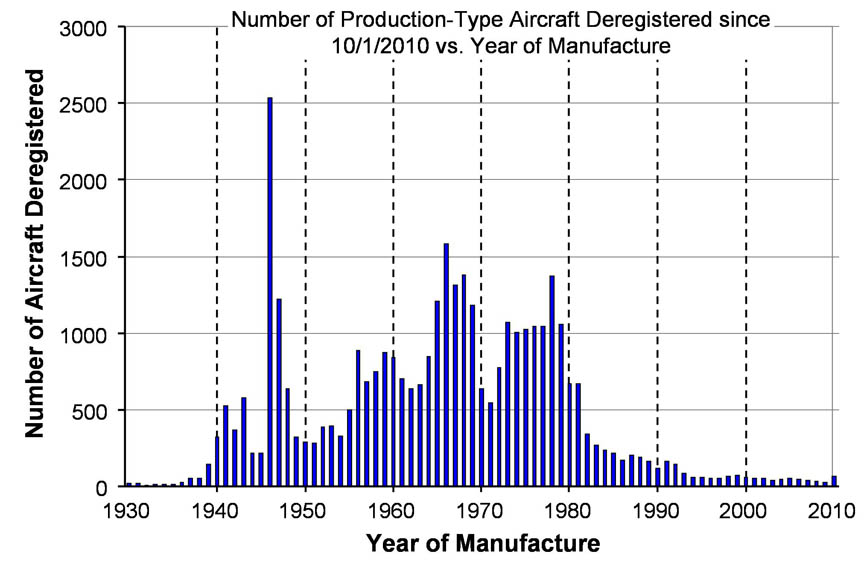I don't know, still a lot of cheap planes for sale that aren't worth buying, with the deregistration process I figure a bunch more of those will disappear as well.
I figure most of the deregistered aircraft were "phantoms" that didn't physically exist anymore.
Here's some statistics from postings I made on another forum:
As of 31 December 2010, there were 373,869 total aircraft registered. As of 15 November 2013, there were 317,588 (About a 15.1% decrease). Almost 20% of all US aircraft (19.5%) have been removed from the rolls.
The percentages below are the percentage of the aircraft of that type deregistered during the process:
Cessna (all): 16.5%
Cessna 150/152: 23.6%
Cessna 172: 13.0% (about the same percentage as the C-170)
Cessna 182: 9.7%
Nearly one in four (22.6%) of the deregistered aircraft were Cessnas. About a quarter of the Cessna deregistrations were due to export.
Piper (all): 16.4%
Piper Tripacer: 26.0%
Piper PA-28: 11.5%
Piper J-3: 13.4%
Piper PA-11 through PA-18: 12.2%
Beech: 16.4%
Beech 35/36: 10.4%
Some of the older companies:
Aeronca: 14.6%
Stinson: 21.5%
Mooney: 10.5%
Luscombe: 17.7%
Taylorcraft: 21.5%
Who took the biggest hit? Surprisingly, it was some of the major non-GA manufacturers:
Boeing: 26%
Douglas/McDonnell: 39.5%
Lockheed: 45.8%
However, about a third of the Boeing numbers are Stearmans, and another third are exports.
Here's a breakdown of the year of the number of aircraft deregistered vs. their year of certification:
Ron Wanttaja


